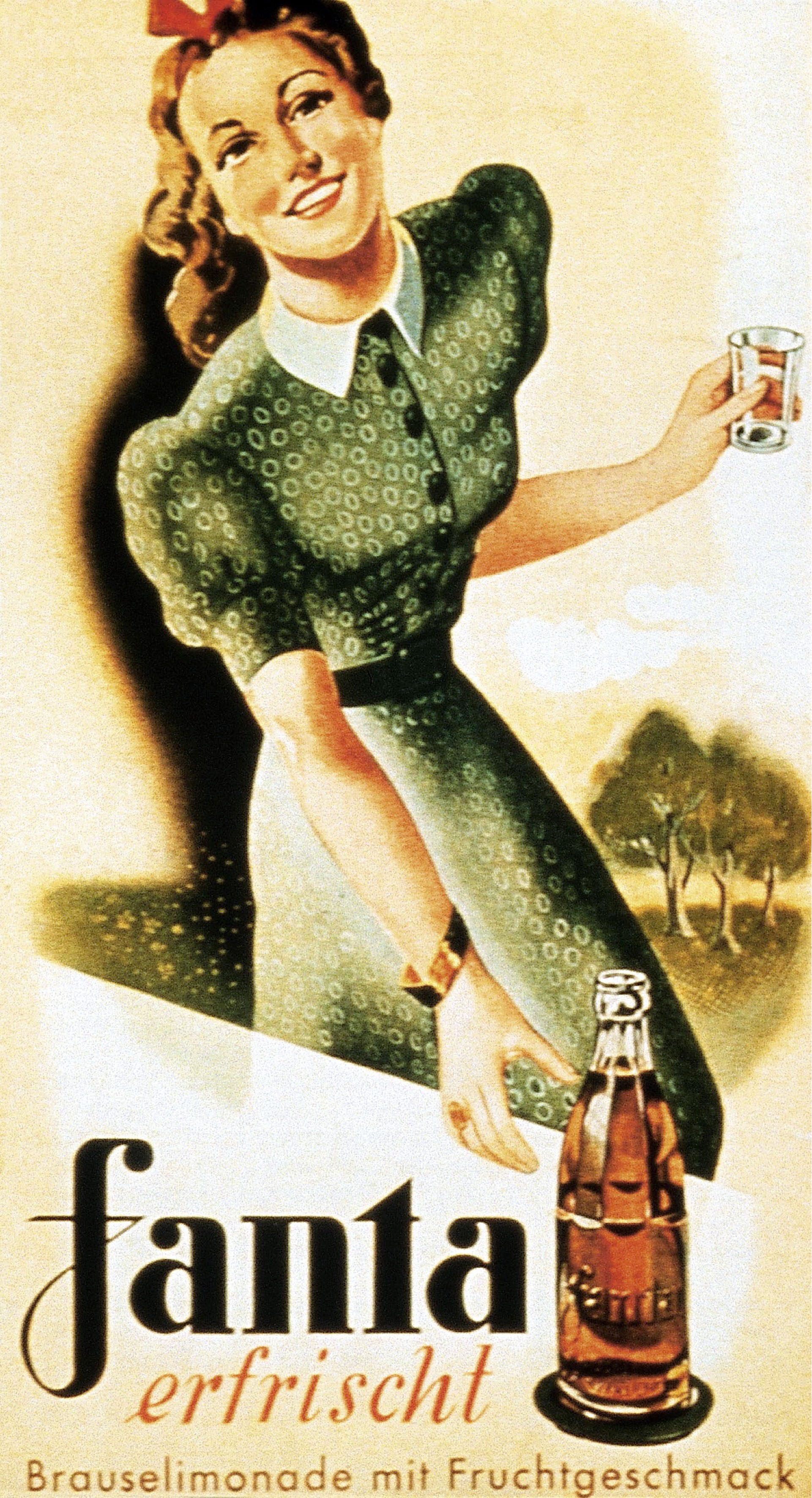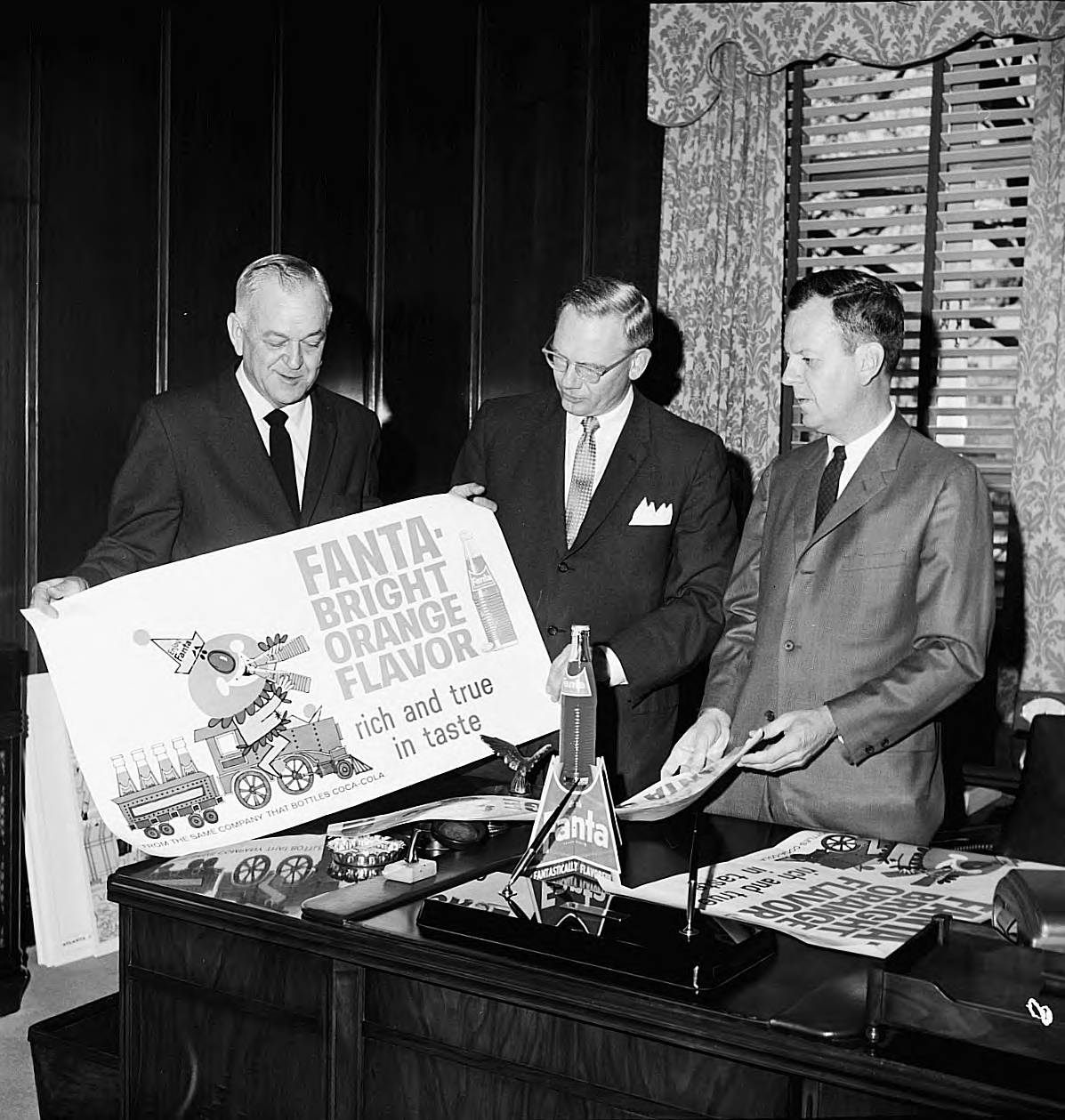Student Village Academy › Forums › HISTORY › The Fanta history: Made In germany
- This topic is empty.
-
AuthorPosts
-
-
August 24, 2023 at 1:38 PM #55365
 justseyiKeymaster
justseyiKeymasterThe Evolution of Fanta: From Wartime Innovation to Global Refreshment
The origins of Fanta, a beloved soft drink known for its diverse array of flavors, trace back to a pivotal period in history. Fanta emerged as the second creation by the Coca-Cola Company, and its history is interwoven with the tumultuous era of World War II.
The saga of Fanta began in Germany during the year 1940, under the shadow of global conflict. The German bottling company of Coca-Cola, faced with the challenges of war-related shipping disruptions, found itself unable to produce the traditional Coca-Cola syrup. In a remarkable turn of events, Max Keith, the factory manager, undertook a daring endeavor to keep the operations running.
He ingeniously concocted a beverage using available ingredients such as whey, a cheese by-product, and surplus apple fibers from lollipop production. The inaugural version of Fanta, unlike the familiar version today, appeared in a yellow hue and possessed a distinct taste.
Intriguingly, the flavours of Fanta shifted periodically during the war, as its composition adapted to the available resources. The brand’s name, Fanta, was coined in a staff competition, with salesman Joe Knipp suggesting the name upon hearing it mentioned by Max Keith.
As history unfolded, the merger of the German and Dutch Coca-Cola plants brought a temporary halt to Fanta’s production. It wasn’t until 1955, during a competitive market landscape with the emergence of rival Pepsi products, that Fanta was re-introduced to the public. The revitalized soft drink gained popularity across Europe, Asia, Africa, and South America.

However, beneath Fanta’s flavorful surface lies a chapter that intertwines the beverage with a darker period of history. Created within Nazi Germany during World War II, Fanta’s origin story is shadowed by the Third Reich. Despite the wartime adversities, Fanta’s inventive recipe enabled Coca-Cola to maintain its presence and popularity in Germany.
Fanta’s inception emerged from limited resources. The ingredients used to create the wartime Fanta included apple fibers, fruit shavings, beet sugar, and whey. While not necessarily palatable by today’s standards, Fanta became a symbol of resilience amid scarcity. The beverage’s name, “Fanta,” a shorthand for “fantasy” in German, encapsulated the imagination and creativity required to craft it.
Max Keith, the dedicated manager of Coca-Cola GmbH, played a pivotal role in Fanta’s journey. His allegiance to the Coca-Cola brand transcended his nationality, enabling him to navigate a complex landscape where business intertwined with political ideologies. The Coca-Cola Company, both in the United States and Europe, navigated a delicate line between business interests and geopolitical realities. The company’s presence continued in Nazi Germany, marked by events such as the sponsorship of the 1936 Berlin Olympics.

Coca-Cola executives review Fanta advertising in the 1960s. LANE BROTHERS COMMERCIAL PHOTOGRAPHERS COLLECTION, 1920-1976. SPECIAL COLLECTIONS AND ARCHIVES, GEORGIA STATE UNIVERSITY LIBRARY.
As World War II drew to a close, Fanta’s wartime chapter concluded, and production ceased. The legacy of wartime Fanta, born from necessity and ingenuity, found a second life as it was reimagined and reintroduced to the world. Despite its origins, Fanta managed to transition beyond its wartime associations to become a globally recognized and enjoyed beverage.
The history of Fanta is a testament to the intertwining forces of history, business, and innovation. From its wartime origins as a symbol of resilience to its present-day status as a diverse and beloved soft drink, Fanta’s journey through time reflects both the challenges of its past and the effervescence of its enduring appeal.
-
-
AuthorPosts
- You must be logged in to reply to this topic.

